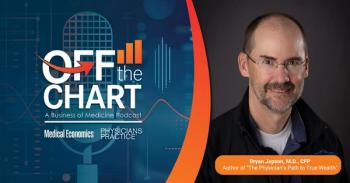
Delivering Bad News to Patients: Who is the Best Messenger?
I was recently part of a continuing improvement project that examined the best way to give breast biopsy results which were positive for cancer to patients.
I wrote last week about how my work-life balance can be
I give a diagnosis of breast cancer a few times each year. It’s always a difficult call or visit to have. I try my best to be professional but not overwhelm them with too much information. I often wonder whether I should be quick and use the phone or wait until I can tell them face-to-face. Last summer, I received an answer.
I was part of a continuing improvement project that examined the best way to give breast biopsy results which were positive for cancer to patients. The process is somewhat unique because, unlike almost every other test, women can self-refer for mammography. This means the “ordering physician” can be their OB/GYN, internist, family physician, surgeon, or even the radiologist. The radiology department aims to make the experience of an abnormal mammogram as smooth and uncomplicated as possible, giving the woman the option of having all testing done on the same day. This means that the first time I may know that my patient even had an abnormal mammogram is when she’s already had a biopsy done.
Our group - composed of patients, radiologists, breast surgeons, family physicians, an OB/GYN, nurses, and others - worked to find the most patient-centered way to standardize how results were given. The biggest surprise to me was what our patients told us. They didn’t care that much who gave them the results and they didn’t want to wait for an office visit. They wanted to know their results ASAP. Whoever gives them the results needs to be kind and knowledgeable and competent, but doesn’t need to be their primary-care physician or even be someone they’ve met before.
When we jettisoned the whole notion of relaying bad results that I and most other physicians were taught - tell them yourself, do it in person, your presence is important - we relooked at which doctor in the process should be relaying the results, or even if it needed to be a physician at all. Different physicians had vastly different perspectives. On one end of the spectrum was a local OB/GYN group that didn’t want to relay the results at all and were happy to have the radiologist do it. At the other end were those of us who wanted the opportunity to be involved in this process.
Some radiologists wanted to give the result, some didn’t want to make that call, especially if it was one of their partners who had done the biopsy or read the mammogram. We came up with a process that allows the primary physician (identified by the patient) to be involved if they choose to do so. But, we elected to have a central person give the mammogram, ultrasound, and biopsy results. So far it has served as a good balance for what the patient needs and what our physicians can provide.
Find out more about Jennifer Frank and our other
Newsletter
Optimize your practice with the Physicians Practice newsletter, offering management pearls, leadership tips, and business strategies tailored for practice administrators and physicians of any specialty.








